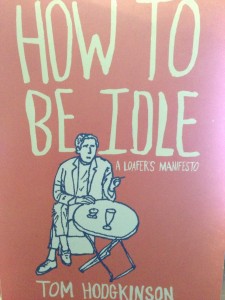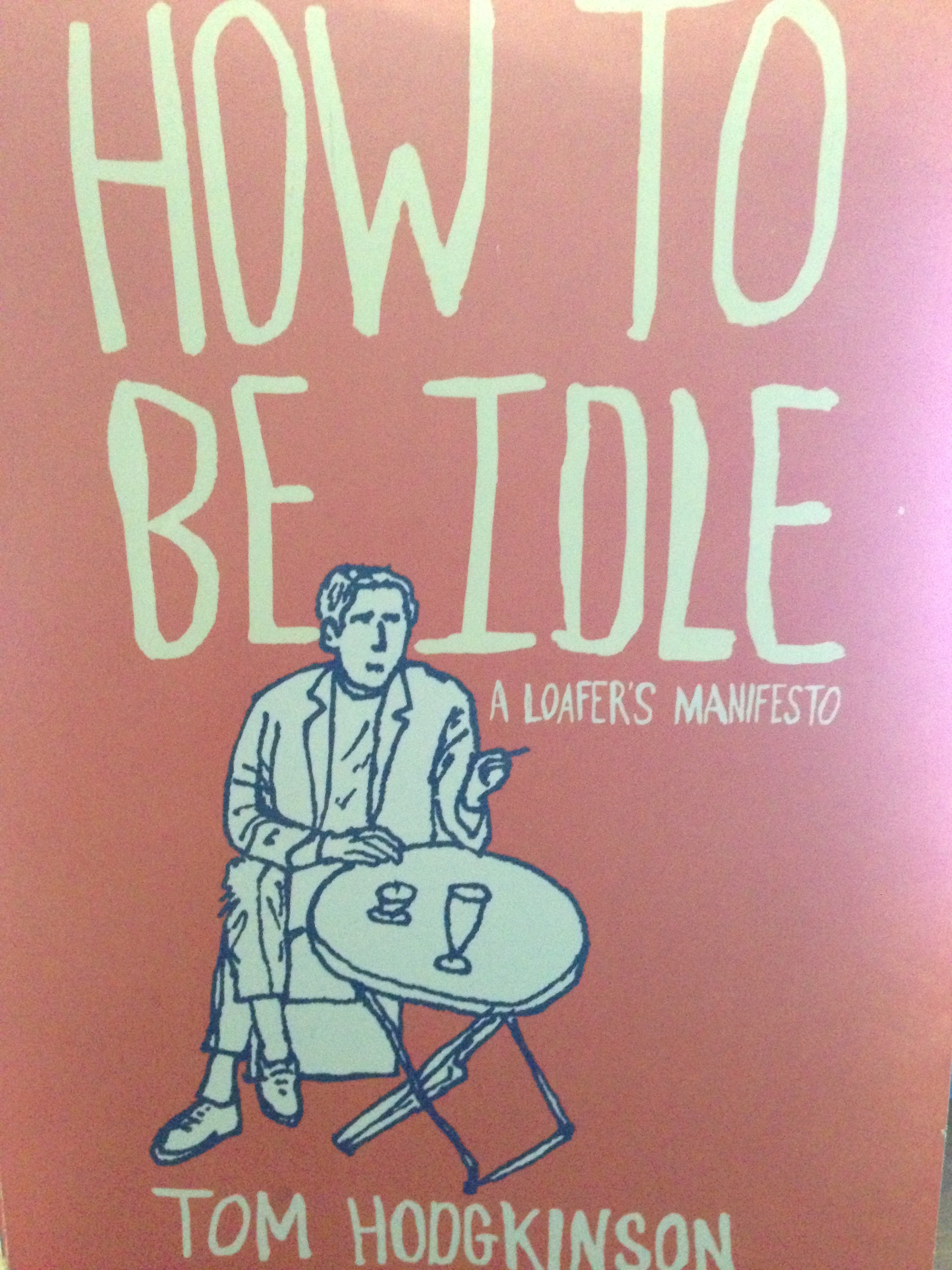 It’s been a great seven months joining the TEDMED community in its Great Challenges in Health and Medicine for 2013. Along with colleagues and other thought leaders around the globe, I got to immerse myself in some of the challenges and promising pathways that can get us moving again.
It’s been a great seven months joining the TEDMED community in its Great Challenges in Health and Medicine for 2013. Along with colleagues and other thought leaders around the globe, I got to immerse myself in some of the challenges and promising pathways that can get us moving again.
So what’s the deal with “How to be Idle“? It’s the title of a book by Tom Hodgkinson. How on earth is that relevant to a conversation about being active (never mind the fact that the cover is a guy smoking a cigarette, sitting (gasp!) and sipping a leisurely coffee)? The book is really a gem. It’s an ode to reclaiming a lifestyle we’re losing in a fast-paced, high-tech world. Chapter headings like “Sleeping in,” “The Death of Lunch”, “The Nap”, “The Ramble” “Skiving for Pleasure and Profit”, “The Art of Conversation” and “A Waking Dream” are all ingredients to a healthy lifestyle. Being physically active is a natural part of all those “idle-like” activities. The book reminds me that there are essential changes and values we need in the work and school place to help us live more meaningful and balanced lives, along with a redesign of our future neighborhoods. Never mind the nostalgia the author has for the Medieval times…
On a more personal level, the TEDMED experience has been invigorating. It’s great to see that there is a group of progressive thinkers out there breaking the traditional boundaries of how we approach health and medicine and who we invite to the discussion table. What made the experience even more special was that I was invited by the TEDMED and Robert Wood Johnson community as an essential partner for the dialogue. And in doing so I have been able to bring the issues and voices of so many of us, particularly those who work in urban underserved communities of color. The experience reminds me of when I was interviewed by the Uptown Collective… they wanted to feature me because of the totality of who I was (writer, community member, public health leader, woman, Latina roots…). And that’s what was great about TEDMED too- it was an invitation to the person behind some great programs and ideas. And for that they should be commended.
I wasn’t able to share this interview with you at TEDMED2013 in DC, so I’m posting it here, with some closing thoughts on the Great Challenge of Promoting Active Lifestyles.
TEDMED: When we think of the Great Challenges in health and medicine, what do you consider to be the top factor driving the complexity of this challenge- Promoting Active Lifestyles?
STEPHANIE: Active design has been engineered out of our lives. So we often have to go out of our way to include activity into our lives. Whereas before it was something unavoidable and natural.
TEDMED: Over the past few months, we often talked about the elephant in the room– an obvious truth that is either being ignored or going unaddressed. In your opinion, what’s the elephant in the room for this challenge?
STEPHANIE: The elephant in the room is that we need to take a system’s approach to addressing the challenge. Without addressing our work environments, school environments and home/community environments we’re just asking people to add a new activity into their already busy days.
TEDMED: What roadblocks have you personally encountered or witnessed when dealing with Promoting Active Lifestyles? Now that you are looking at them in hindsight, what would make it possible to address them?
STEPHANIE: When launching a “Take the Stairs” campaign at a city hospital, I did not have the full support of higher leadership in making it a sustainable, institutional policy. So even though I had the data that showed the signs were effective in statistically increasing stair usage among patients and employees, the project was not as sustainable or able to expand as it could have been. In hindsight, finding that leadership support could have helped the program reach more people.
TEDMED: What would be an example of a small incremental step– perhaps even a low tech one– that could be initiated to move the needle on Promoting Active Lifestyles? What don’t we talk about today that we need to talk about?
STEPHANIE: A small, low tech step that we could take to move the needle on Promoting Active Lifestyles would be to walk more! Move! What I hear in conversations about being physically active is “programs, gyms, classes, gadgets…” I don’t think a product or extraneous activity is the golden key here. It’s redesigning regular activity back into our lives, whether it be walking to places, up stairs, around the office. It all adds up.
TEDMED: Who should be at the table today that isn’t or needs to have a louder voice?
STEPHANIE: Who’s missing at the table? Our city planners. Architects. Private developers. The Engineers of tomorrow. Those who build our new places to live, work and go to school and those who are involved in updating the ones we currently use. Also community organizers and leaders who bring insight to the particular challenges on their own communities.
TEDMED: If you could invite one person in the room (someone either historical or contemporary) with us to discuss this Challenge, who would it be? Why?
STEPHANIE: Without thinking of a fun historical person to talk to about this challenge, I’ll bring in a contemporary one, to commend, but ultimately challenge him on this particular topic. Mayor Michael Bloomberg, who has been a tremendous public health advocate for the City of New York. What I’d like to discuss with him though is falling short on where promoting active lifestyles is tied to affordable housing, and where it becomes a victim to what Jen Senko refers to in her documentary “Vanishing City” , “the luxurification” of New York City. Why are playgrounds, community centers and opens spaces of public housing being sold to private developers for high rise luxury buildings? Why are the open and communal spaces of old rent-stablized Mitchel-Llamas disappearing? Why does the Parks Department have exclusionary policies requiring field permits and tennis permits? Whereas before all we had to do as kids was run out of the house with our baseball mits and enjoy an open field. Not so any more.
TEDMED: It’s hard to encourage physical activity outside the home when so many people are tied to a chair and desk at their work or classroom. Can you think of examples of new developments, redesigned workplaces or communities that are addressing this Challenge?
STEPHANIE: A recent example of a new development encorporating addressing the challenge of promoting active lifestyles is the Arbor House in the South Bronx. An affordable housing unit of about 124 units, it combines eco-sustainability with healthy living by having indoor and outdoor fitness areas for residents, visible stairwells at the entrance that have see-through doors for light to pour into, stair prompts to encourage use, music and art inside the stairwells. It also has a hydroponic garden on the roof for a resident CSA program, and plants in the lobby. A low tech example (and my former program) is CHALK’s Let’s Move program, recently recognized by First Lady Michelle Obama as a tool for her childhood obesity prevention efforts nationwide. Teachers can follow flashcards for fitness breaks in classrooms, and it’s marketed for urban schools where space is an issue.
